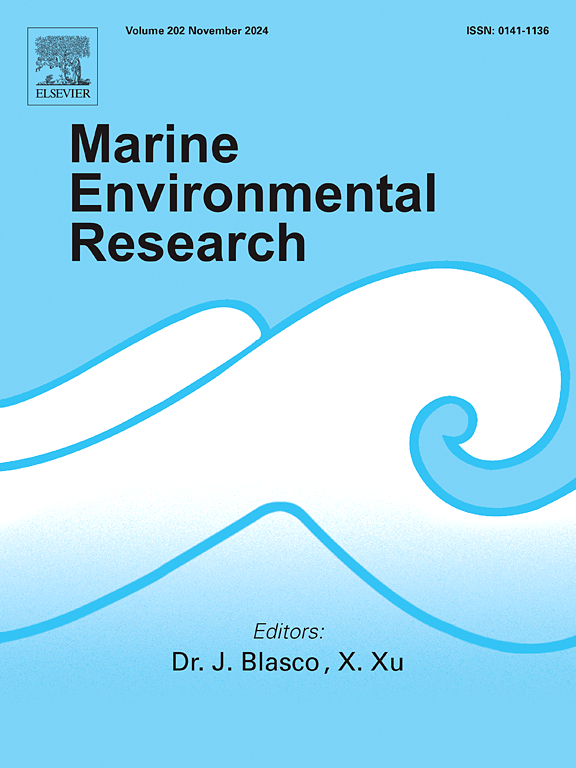Microbial dynamics in seagrass restoration: Unveiling hidden indicators of ecological success
IF 3
3区 环境科学与生态学
Q2 ENVIRONMENTAL SCIENCES
引用次数: 0
Abstract
Seagrass transplantation significantly alters sediment microbial communities, shaping their composition and metabolic functions. One year after Zostera marina transplantation, the microbial community structure and functions at the recipient site began shifting toward those of the donor site. Key microbial taxa associated with seagrass meadow sediment, such as Firmicutes (Hungateiclostridiaceae, Defluviitaleaceae) and Campylobacterota (Sulfurovum), increased in abundance, correlating with sediment organic matter content and carbon availability. Four functional groups were identified, each with distinct metabolic roles: (1) Opportunistic Anaerobic Degraders, (2) Seagrass-Driven Carbon Recyclers, (3) Anaerobic Fermenters and Hydrocarbon Recyclers and (4) Oxygen-Linked Carbon and Sulfur Cyclers.
The sediments of transplanted Z. marina meadows exhibited increased cellulolysis and aerobic chemoheterotrophy, along with a reduction in nitrogen metabolism one year post transplant. Despite these microbial shifts, sediment isotopic signatures remained indicative of algal biomass, suggesting an incomplete transition toward a mature seagrass environment. Multivariate analysis further confirmed that the microbial community at the recipient site had not yet fully converged with that of the donor meadow, indicating that complete sediment maturation may require longer timescales. These findings demonstrate that microbial community composition and functional annotations serve as early indicators of seagrass restoration success. Long-term monitoring is essential to track ecosystem recovery and assess the stabilization of sediment conditions.

求助全文
约1分钟内获得全文
求助全文
来源期刊

Marine environmental research
环境科学-毒理学
CiteScore
5.90
自引率
3.00%
发文量
217
审稿时长
46 days
期刊介绍:
Marine Environmental Research publishes original research papers on chemical, physical, and biological interactions in the oceans and coastal waters. The journal serves as a forum for new information on biology, chemistry, and toxicology and syntheses that advance understanding of marine environmental processes.
Submission of multidisciplinary studies is encouraged. Studies that utilize experimental approaches to clarify the roles of anthropogenic and natural causes of changes in marine ecosystems are especially welcome, as are those studies that represent new developments of a theoretical or conceptual aspect of marine science. All papers published in this journal are reviewed by qualified peers prior to acceptance and publication. Examples of topics considered to be appropriate for the journal include, but are not limited to, the following:
– The extent, persistence, and consequences of change and the recovery from such change in natural marine systems
– The biochemical, physiological, and ecological consequences of contaminants to marine organisms and ecosystems
– The biogeochemistry of naturally occurring and anthropogenic substances
– Models that describe and predict the above processes
– Monitoring studies, to the extent that their results provide new information on functional processes
– Methodological papers describing improved quantitative techniques for the marine sciences.
 求助内容:
求助内容: 应助结果提醒方式:
应助结果提醒方式:


